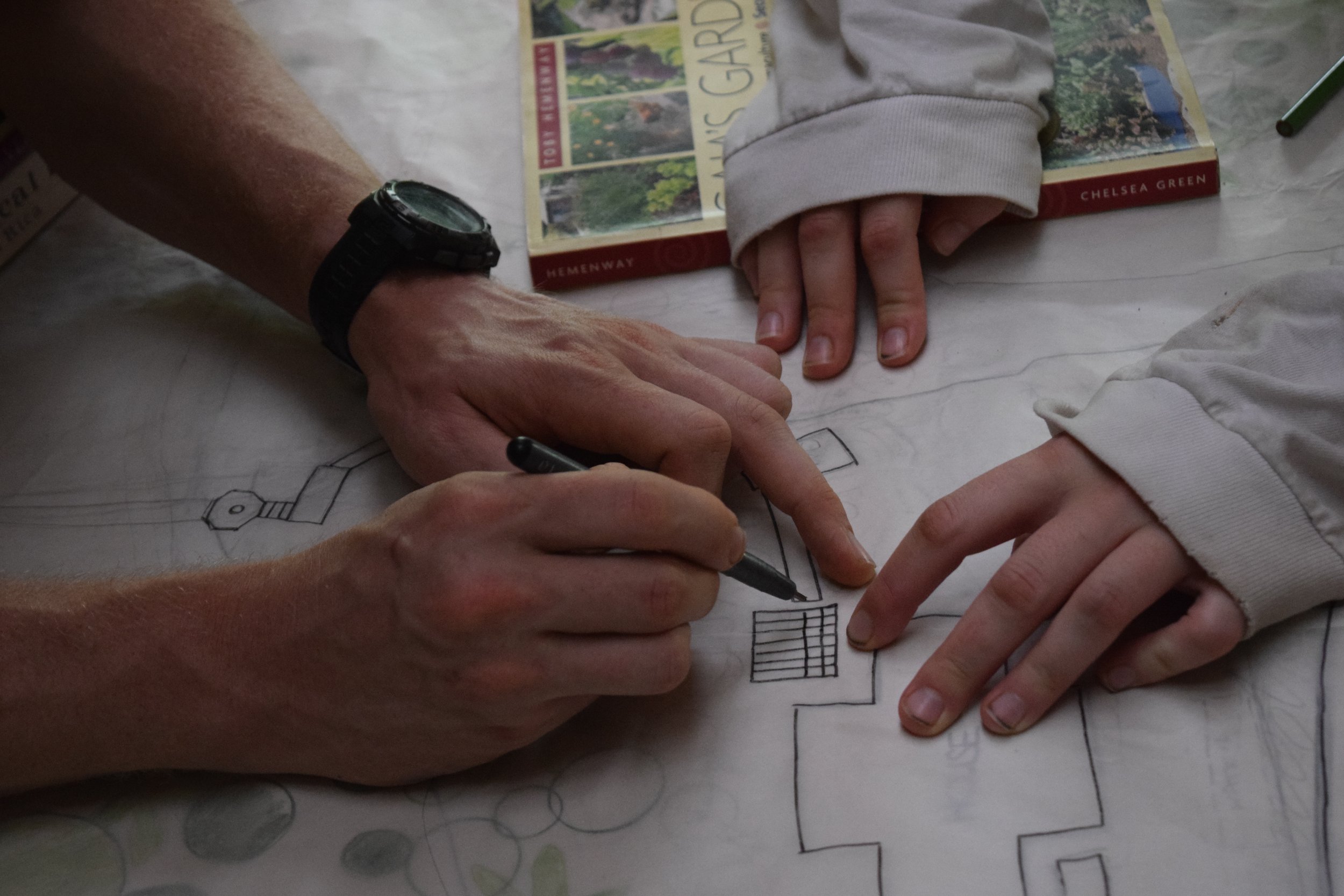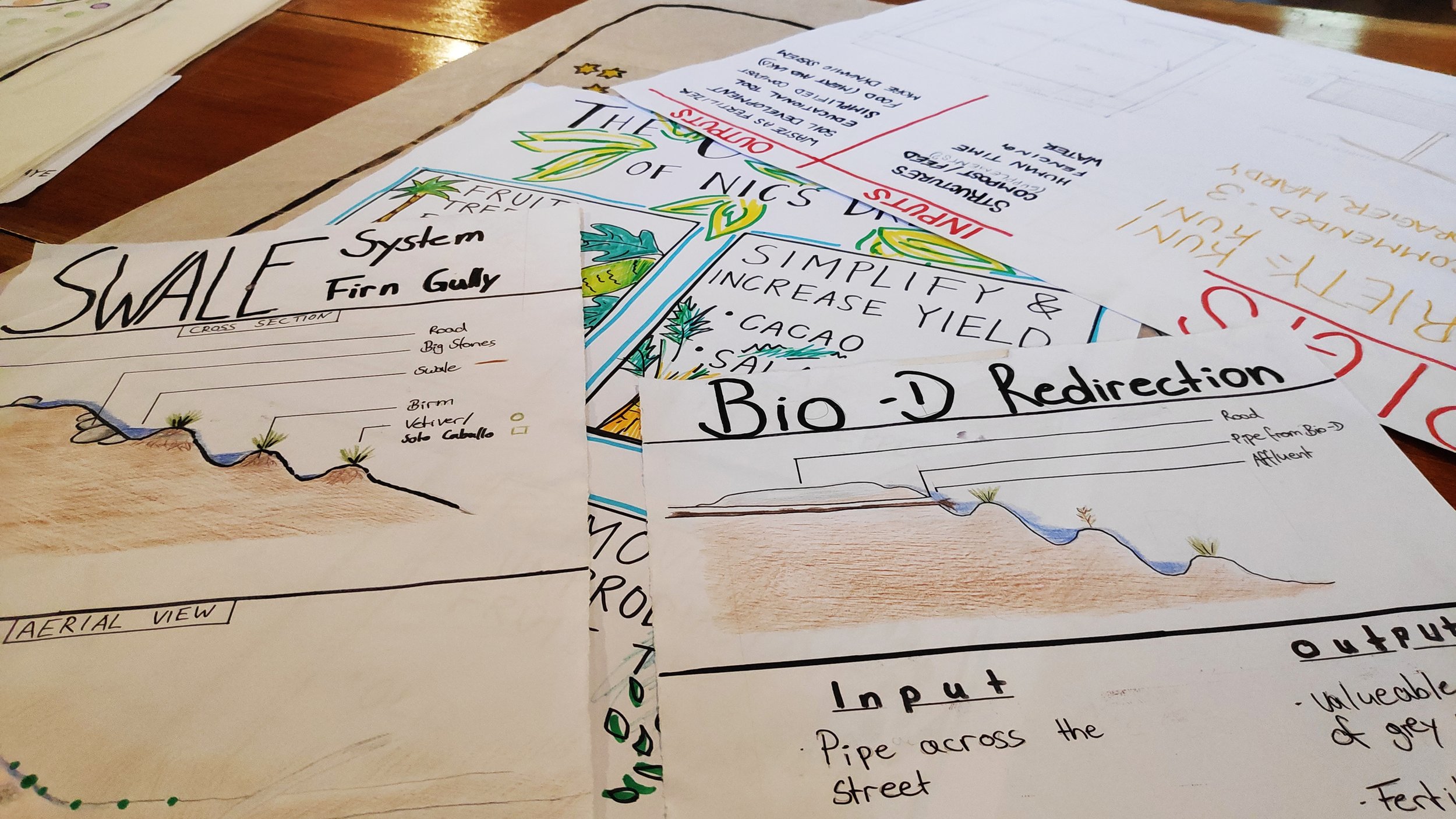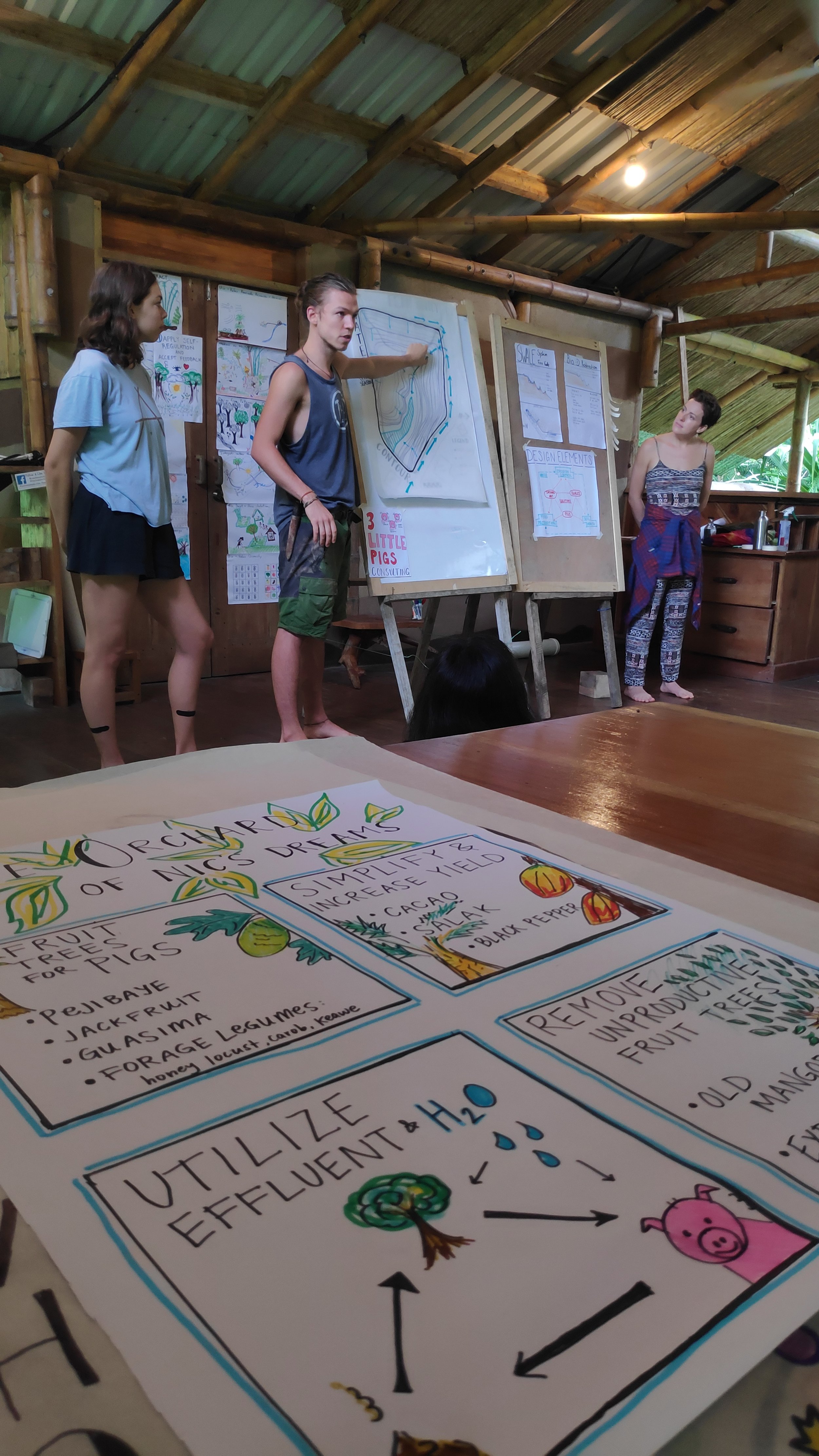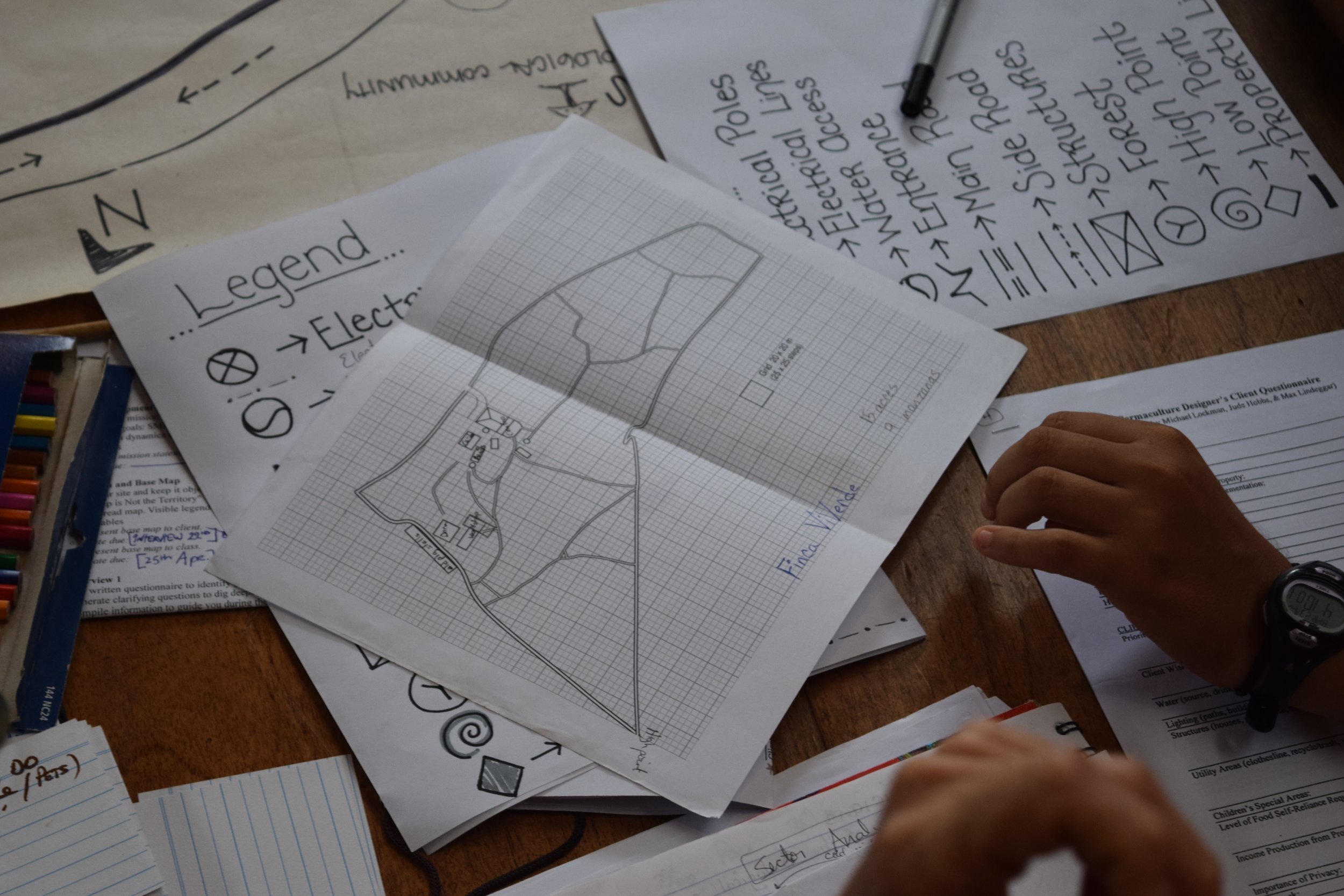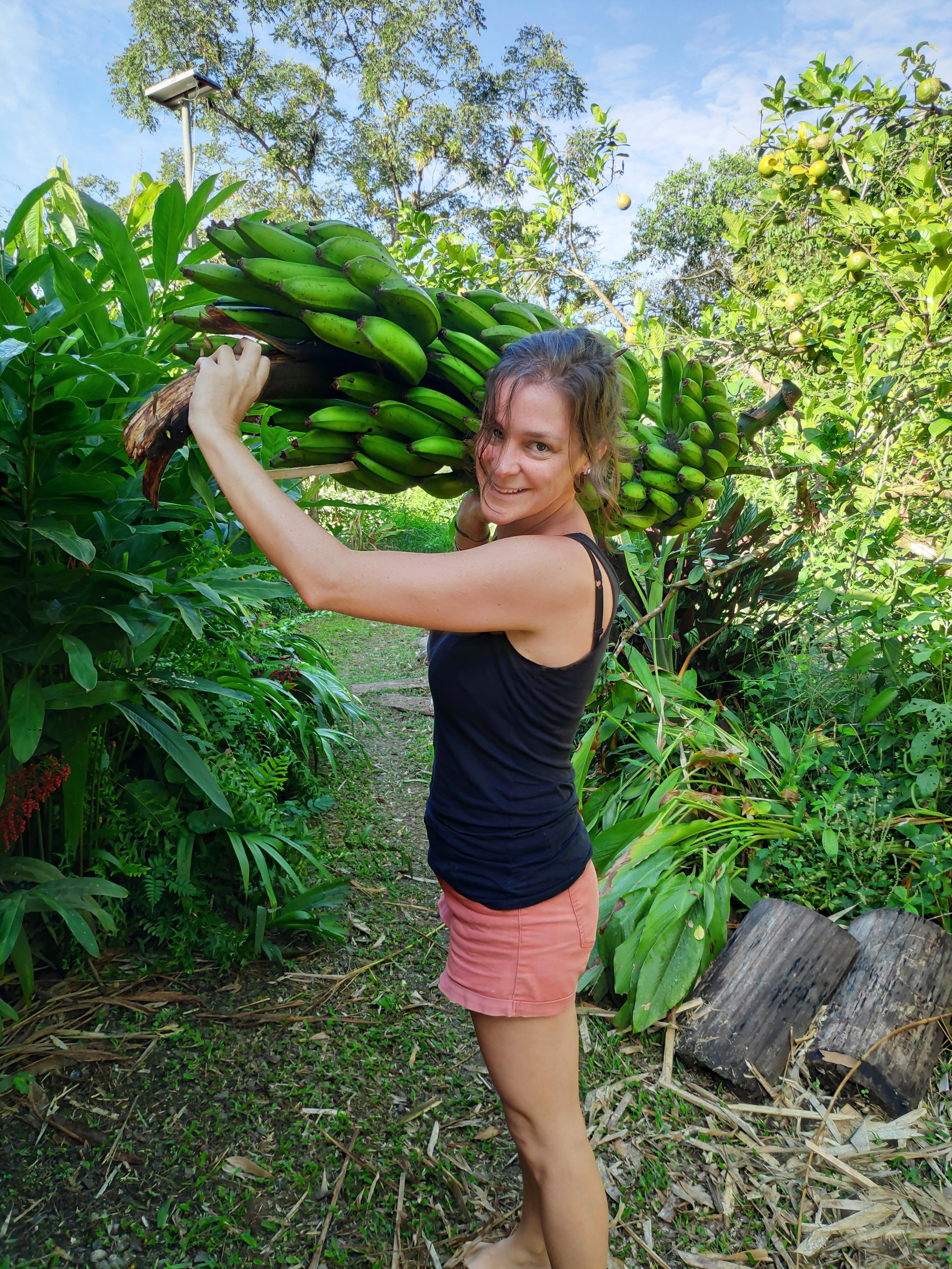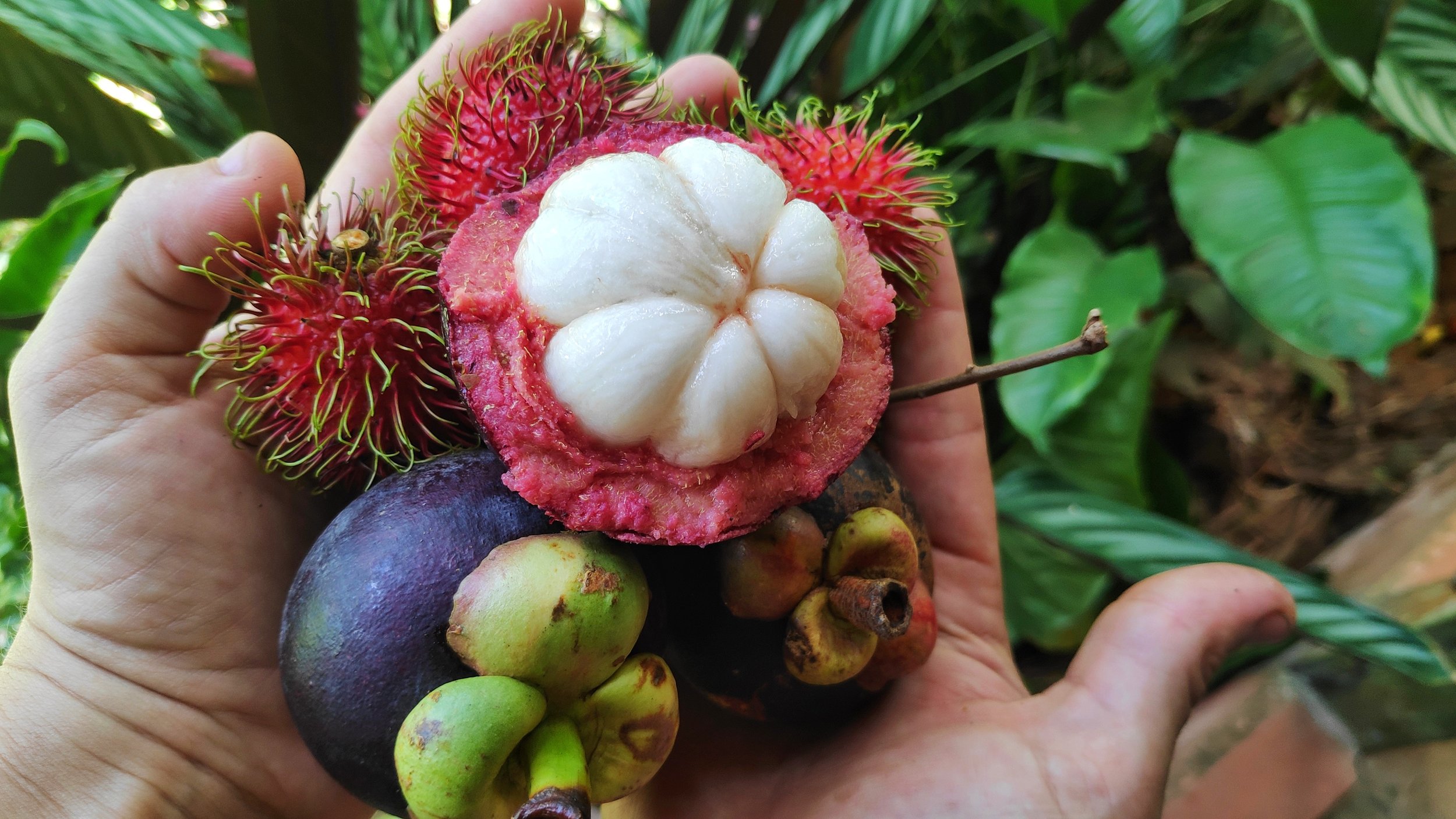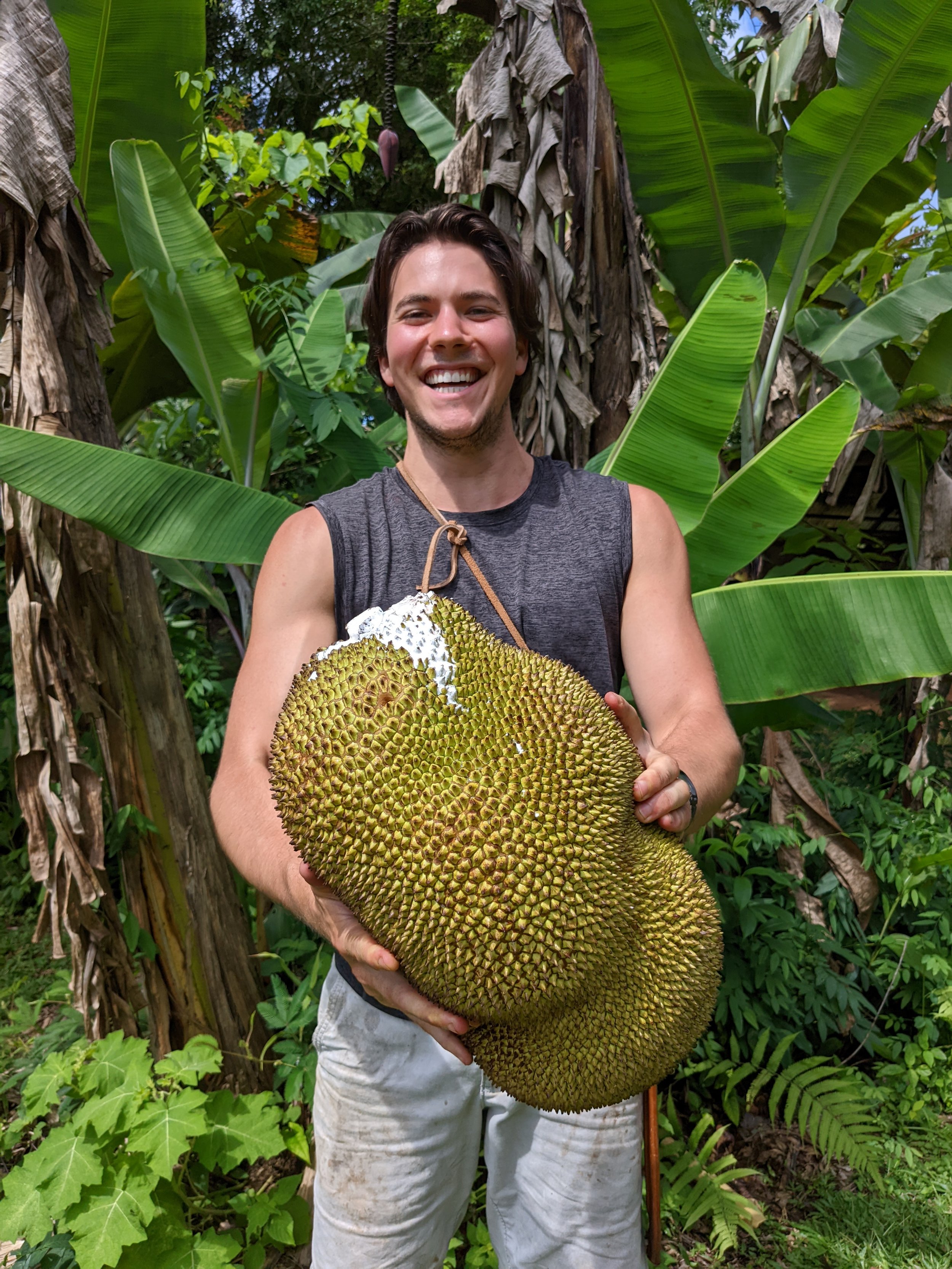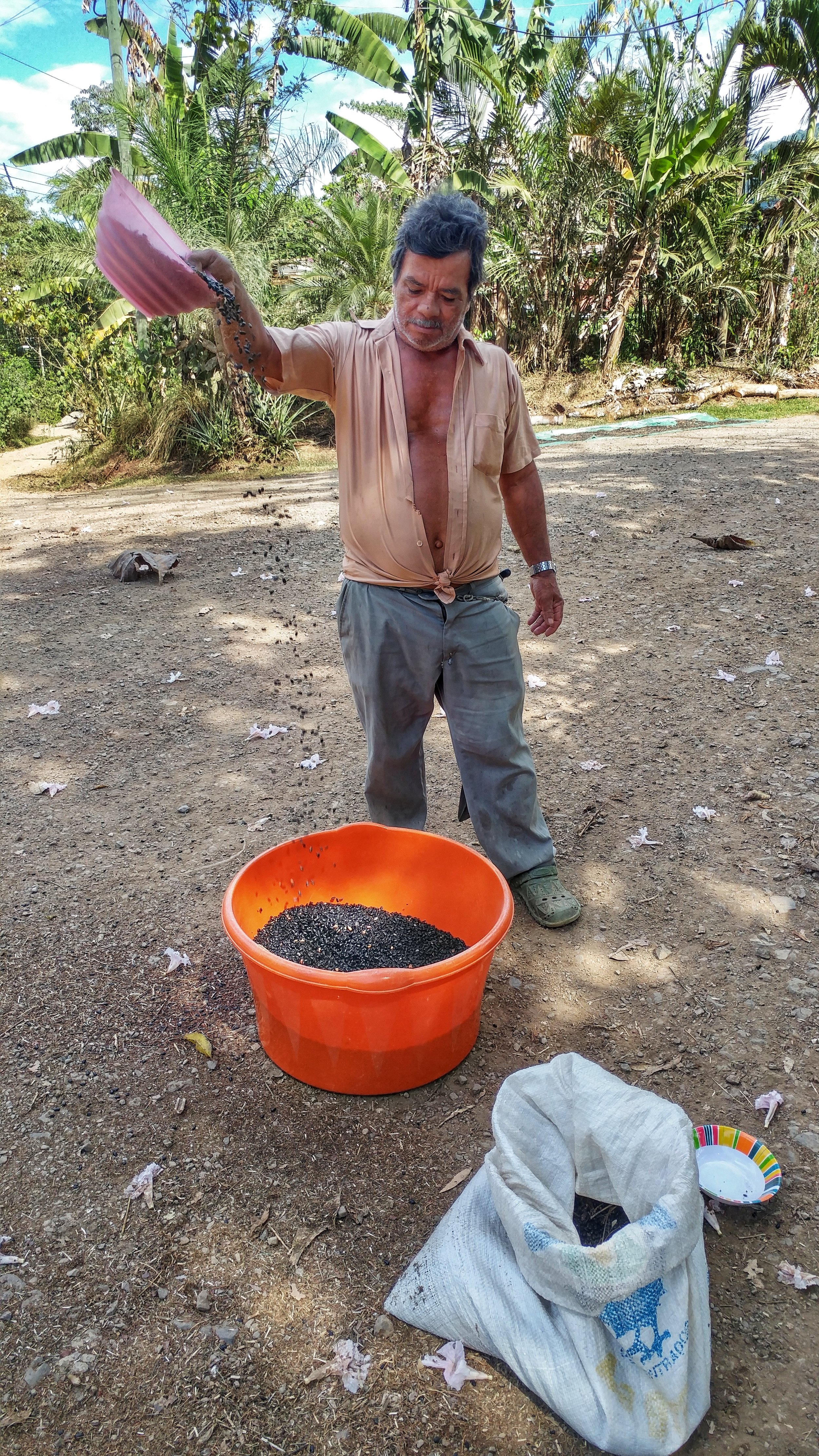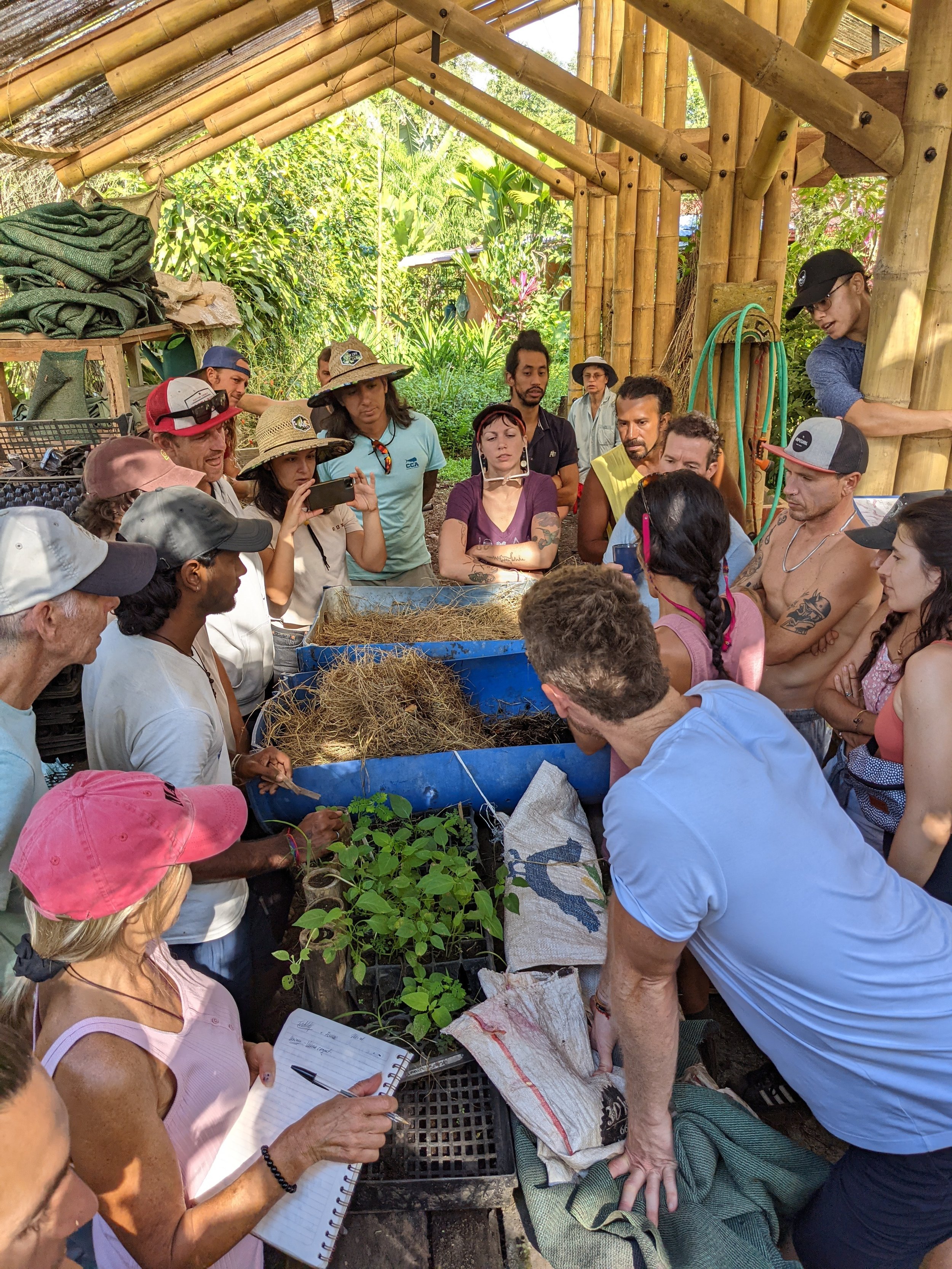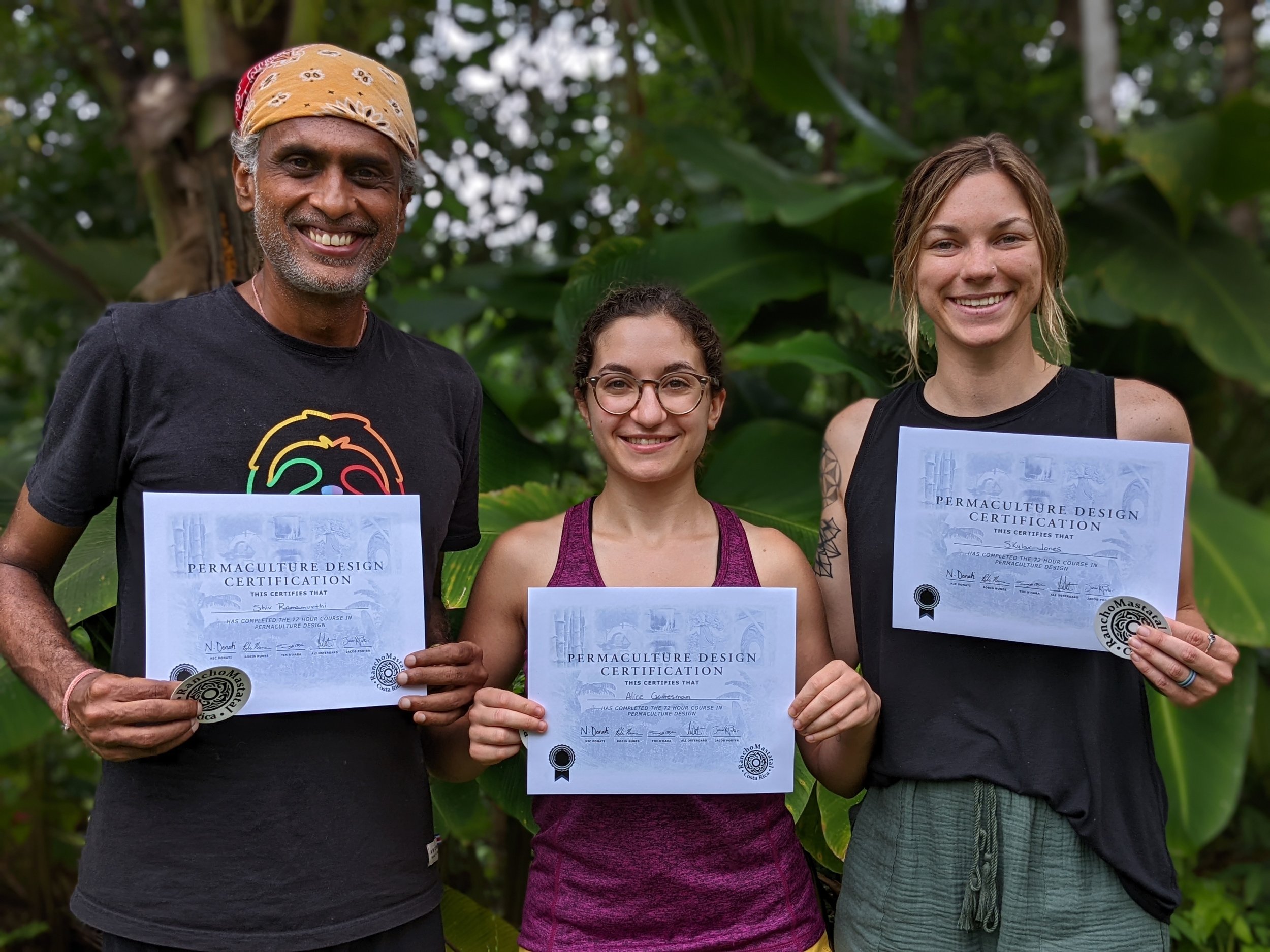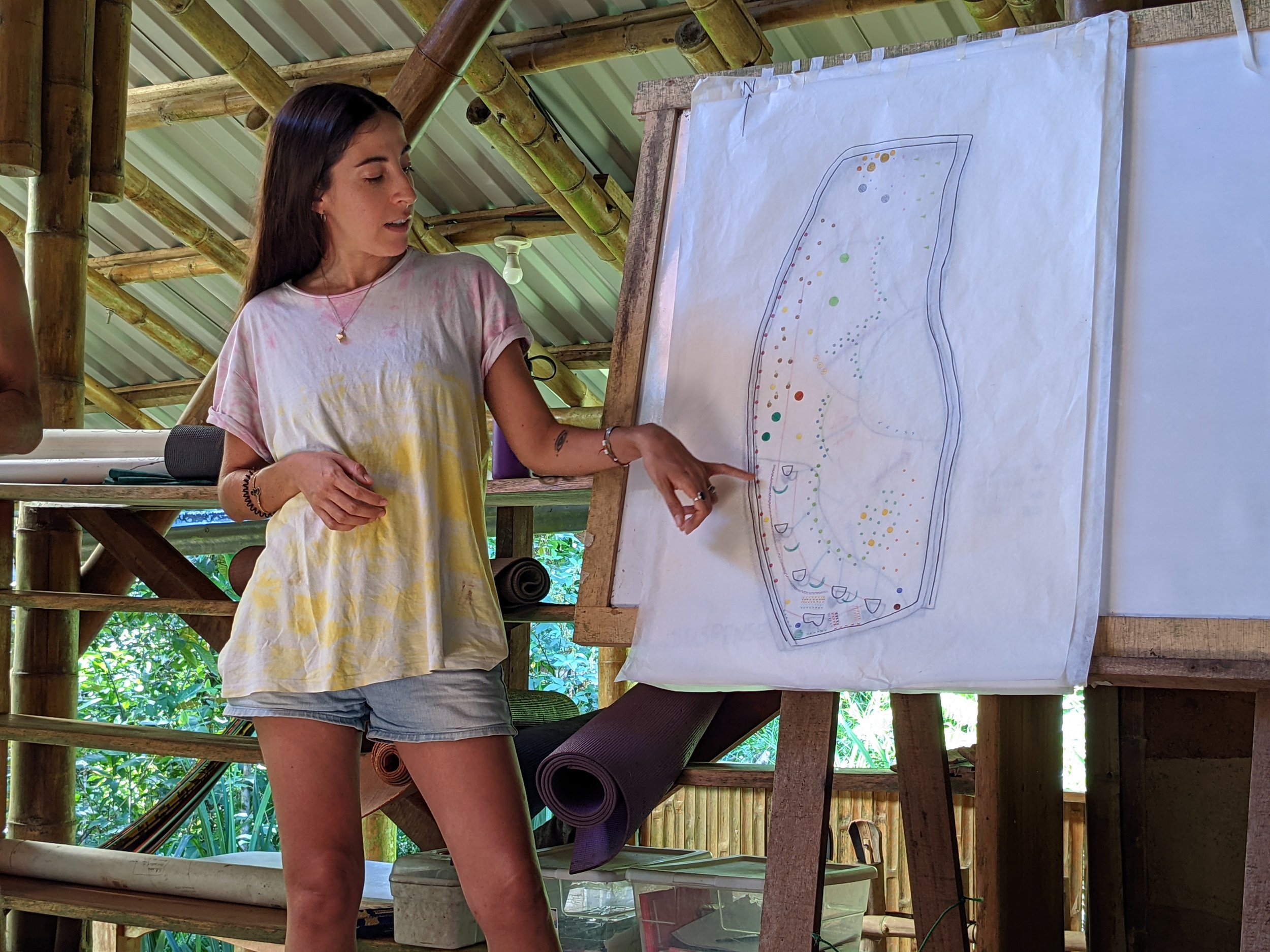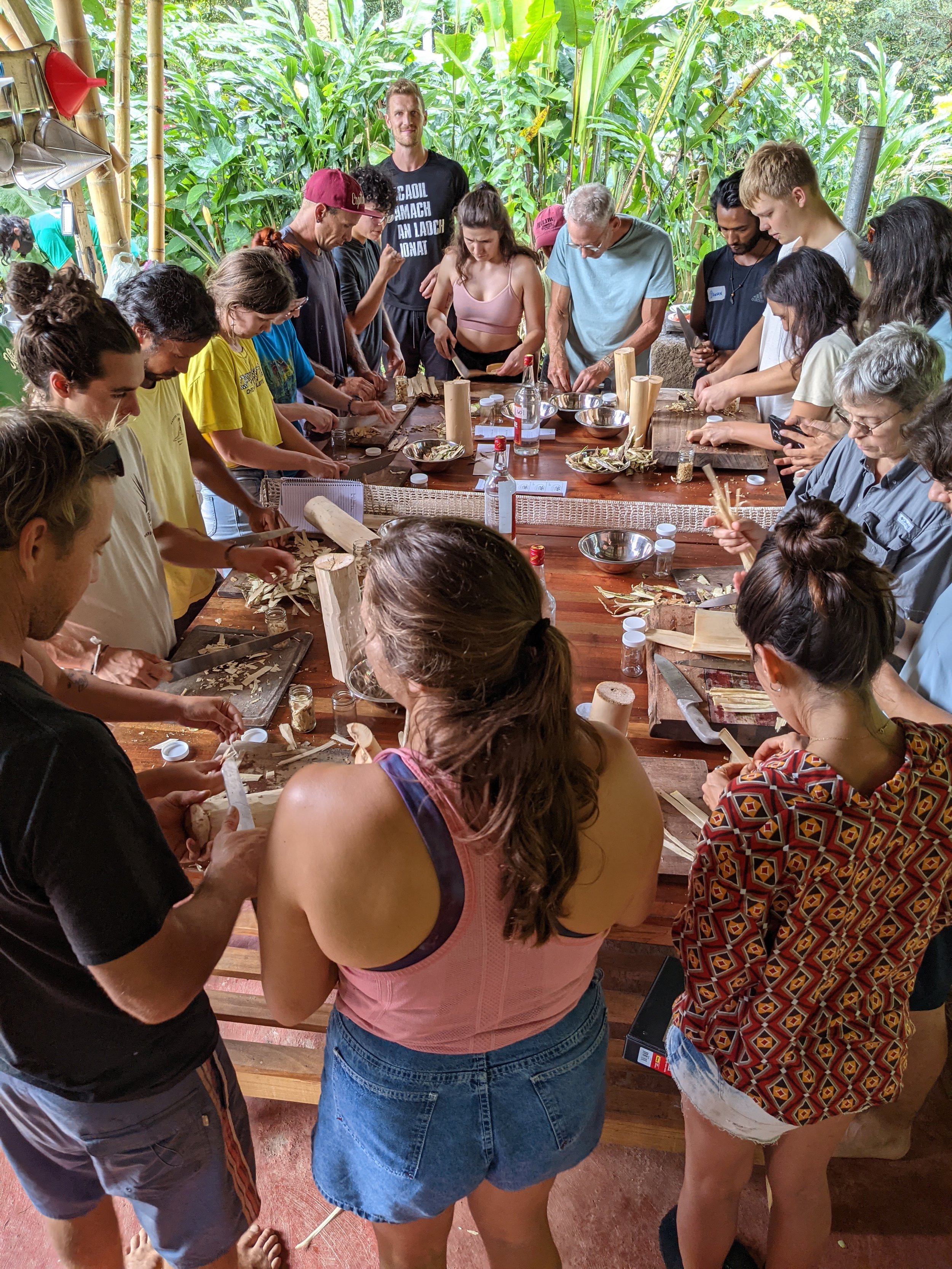Why the World Would be a Better Place if Everyone Took a Permaculture Design Certification
By core team member, Nic Donati
What is Permaculture
Permaculture is a methodology of thinking about, designing and creating environments that are regenerative from an environmental perspective and functional from a human perspective.
So, what does that actually mean? Let’s look at some specific examples, as often we struggle to take the theoretical to the practical.
Permaculture can be applied in pretty much any context, although historically it has most commonly been used in agriculture. So let’s start there.
Permaculture in Agriculture
In agriculture the goal is to grow food and in most cases create an income or profit for farmers. As a permaculturalist we can look at the system of agriculture, look how we can grow food (the goal), and design and create environments that are regenerative for the planet and functional for humans. In the context of agriculture we want to grow food that is going to regenerate our environment as well as create income and food for humans. This is the design problem and now we have to come up with solutions for this.
What is important is that as permaculturalists we put the needs of our environment and the needs of humans on the same level. In the past we have not considered the needs of the planet and that has led to deforestation, desertification, loss of biodiversity etc… this has met our goal (at least in the short term) of providing food and income for humans, but has woefully overlooked creating a model that is at the least sustainable (can continue in perpetuity) and at best regenerative (actually improve the environment e.g. soil quality, water quality, biodiversity etc…).
In permaculture we are interested in creating design solutions that meet both the needs of our environment and our human needs. Some of the design solutions that have been developed since the inception of permaculture have been to create more regenerative farming practices. These have often drawn upon and been inspired by traditional methods of agriculture, for example using polycultures (the use of many species in one area as opposed to whole fields of one crop, known as a mono crop), crop rotations that benefit one another, multi-story agroforestry systems (also types of polycultures), syntropic agriculture, green manures & cover crops etc…. These systems are seen as potential design solutions as they have the potential to produce food, profit and regenerate the land.
Going back to the beginning we can see that from a permaculture perspective what we have done is taken something like agriculture and redefined the goals of it, in order to create a different outcome. We have changed the goals of agriculture from simply growing food and creating profit, to growing food, creating profit AND regenerating the land.
Defining Goals in Permaculture Design
This is a really important concept that we will learn more about - clearly defining your goals. Many of the problems that we see around the world are created by having poorly defined goals or inadequately inclusive goals. Our first step is to think through what our goals and context are in order to get the outcomes that we want. At this point it is worth mentioning that within permaculture we already have some defined ethics and principles (you can read more about them here and how we apply them) that can help us guide our goals. The original three core ethics are:
Earth Care
People Care
Fair Share
Defining our Goals in Agriculture
We have outlined that in the past we prioritized people care (or at least we thought we were) and now we have added in an earth care goal by wanting to regenerate the land too. Maybe we should also include a fair share element into our goals for agriculture?
As with any exercise to find design solutions, there are usually many different ways to achieve it. I am sure if people sit down and think about it we can come up with some good design solutions to implement our fair share goal in our agricultural model. One of the most obvious to me is making sure that farmers are getting paid a fair price for their production and that at the very least surplus from production is distributed to people who need it most through food banks, shelters, etc… Write in the comments below some of your ideas for creating fair share within agriculture.
How we can Meet our goals?
We buy all our beans from local farmers. Here is Chepo winnowing his harvest.
Now that we have identified how we want to shift the current agricultural paradigm, we have to implement our design solutions in a real world context… But, how? This is of course is the hardest part, its one thing to come up with an idea and another to actually go out there and do it. There are so many people who are working on this and so many different ways that these goals can be achieved. Our first step should be to research this market. Is anyone already doing this? How have they identified and articulated their goals? What are their solutions? Can we help them, work with them, collaborate or just support them by buying their products? If we can’t find anyone that is filling this niche then maybe this is an opportunity for us to fill it? Do we want to get into this market and start a business?
Maybe we identify through our research and based on our skills and context that we would be better off getting involved in the political realm. Classically we have relied upon government and law makers to impose rules and regulations on industry and commerce to shift practices. Can we advocate for the change we want to see? Can we be the change makers? One option could be to get into politics or join an advocacy group in order to make political changes that you believe in.
So, without a large career change what can we do? As individuals we have a lot of power even if we decide this is not what we want to throw ourselves into full time or for a living, we can still effect change more subtly. After all every time we spend money we are supporting one organization vs another. We can be diligent to make sure we know where our food is coming from and if they are producers that are supporting our paradigm shift or not. We will talk extensively about some of these issues and solutions in our Permaculture Design Certification (PDC).
We have looked at how we can take our definition of permaculture and practically apply it to agriculture and we have even looked at how we might go about implementing these changes that we want to see happen.
Social Permaculture
As I said before permaculture can be pretty much applied in any context and there is increasingly a body of work within social permaculture. Social permaculture is using these same basic ethics and principles that we mentioned above, but rather than applying them to the physical environment we are applying them to our social organizations.
As we talked about before let’s look at the classic business model of a Public Limited Company (PLC) or in the US its known as a Corporation. Essentially the goals of these companies are again centered on profit and distribution of profit to shareholders. We have seen over history that when the explicit goals of a business are to generate profit and to distribute it to shareholders, that is what they are going to do right, as that is their goal.
In social permaculture we are again interested in looking at business and defining their goals and objectives to include our three core ethics. We can then redefine the goals of our businesses to generate profit, regenerate the planet and fairly distribute surplus.
Let’s again use a practical example of how we can use permaculture design to redefine the goals in order to get the outcome we desire.
For example, let’s use a clothing company as a business that we are going to redefine the goals of so that they are using our 3 core ethics. Here are some ways that we might do this:
People Care – pays a fair living wage to its employees, maybe it’s a co-op? Maybe it uses a sociocratic model of governance.
Earth care – sources materials that are compostable and/or grown regeneratively, repairs old clothes so they don’t get thrown away, recycles old clothes.
Fair Share - gives clothes that are no longer in fashion (or the season has changed) to people who need them the most or donates them to charity. It could also be an employee co-operative that distribute profits to the people who work there too.
There are many ways in which we could imagine these ethics working for a business and many businesses are now starting to employ more of these ideas into their goals and objectives. The two most commonly used terms in business trying to do this work are - social enterprises and B-Corporations. These sorts of organizations are actively trying to change the way their organizational goals are structured in order to include some of the ethics we have outlined.
We have looked at what permaculture is and how we can apply permaculture in different contexts. Hopefully you can see that many of our problems that we face in the world are due to having either insufficient or poorly defined goals. Once we redefine these, we can begin to think about how we can design and create solutions.
How do You Study Permaculture?
Like any other topic you can learn a lot by reading books and studying the literature. Everyone learns in different ways and learning from text books is not necessarily everyone’s idea of fun! You could study in a practical way by working somewhere and looking at the designs people have created to solve their challenges. After reading this article I hope that everyone can begin to look at why problems are created and how we can redefine or clearly state our goals in order to try and change to a more desirable outcome.
Students practicing using the A-frame during our PDC
Rancho Mastatal offers two Permaculture Design Certifications (PDC) a year, one in the November/December and one in April. In this course we go through many of the different design challenges we face as individuals and as a larger society and look at methods and techniques that have been identified to tackle these.
The PDC is very much focused on creating design solutions in a practical way, using the Ranch as a living example we will frequently walk around and see how we have created solutions for design challenges in our context. As I have done in this article it is often important to not just outline the problems and solutions, but actually see how they have been applied. Remember though context is key, the design solution for one place may not necessarily be the design solution for another place, so once we have established our goals and context we can begin to research and implement solutions.
The secret to humans’ success has been our ability to learn very quickly from one another. Our social learning abilities far outstrip that of our primate cousins and it is this innate ability to learn from others which is so crucial to our ecological success (which has also caused its own problems!).
We are big believers in harnessing this innate ability of humans to pass on our knowledge and experiences to you, so that you don’t have to learn it all by yourself, let us help you accelerate your learning.
You could also volunteer, although you are unlikely to receive the theoretical underpinnings that are important to gain context in different situations. At the Ranch we do offer a short two month internship however, we do not generally include the permaculture theory. You may do lots of activities that are associated with some of the ways we have designed our solutions, but getting the balance in this type of context is going to be difficult and will rely on you doing the leg work and reading in the background.
We offer a one year apprenticeship where all of this is covered. We teach all of the PDC modules to our apprentices and they receive plenty of practical opportunities to practice and apply these ideas. This is undoubtedly the best way to study permaculture, but not everyone can join us for a year and we recognize that.
Is a Permaculture Design Certification Worth it?
As I have said above, it may feel like a large investment for you, but in the context of the experience, we think it is worth the investment. You can definitely study all of these concepts in a book or online and you will learn a lot, especially if you are the type of person who retains information well after reading it. If you are more of a visual person, maybe watching YouTube videos will be your study tool.
We are big believer in first learning about something and then applying it and/or doing it, which is why there is plenty of opportunity in our course to practice what you have learnt through practical workshops. There is also time allotted to the design challenge, you will work in small groups to design solutions for the goals and objectives of your clients. This will reinforce the ideas of identifying goals and context and then designing solutions for them. You will get feedback on your designs and ideas during the final presentations that will act as the capstone project for the course.
During the 14 days you will be studying permaculture with a group of people all interested in the same topic, you will also find this incredibly motivating and inspiring, not just the content of the lectures and practicals, but the holistic learning environment.
What do I mean by a holistic learning environment? We specialize in educational workshops here and over many years have learnt a lot about the best way to teach and inspire people. We have created a schedule and environment during the PDC that we believe maximizes your experience. Your time is a balance of practical and theoretical classes, small group work and plenty of time to study in our extensive library of thousands of books. There will be community sharing opportunities, so you can learn from your fellow students. When you are not actively learning there will be time to regenerate your energy by playing sports or doing yoga, trips to the river and waterfall, walks in the jungle or through our small community of Mastatal and be fully immersed in what we believe is a little bit of paradise.
Ultimately everyone has to decide for themselves how and where they want to invest their time and money, but we think the world would be a much better place if everyone took a permaculture design certificate course.
What is Wrong with Permaculture?
Permaculture is a methodology, so often times the things that people criticize permaculture for is not actually the methodology, but it’s the way in which people have used or applied this methodology that is the problem, not the methodology itself. Read more:
Having said that one of the biggest “problems” with the methodology is the lack of a good decision making tool. Now plenty of decision making tools have been developed and are frequently used within a permaculture methodology, but there is not an explicit permaculture decision making tool.
Why is this important? As we have discussed there are usually many different ways to approach and solve a problem and having a handy dandy decision making protocol would help weigh one solution over another. At the end of the day though decision making is a hard thing to develop tools for as they are based very much on the assumption that you know the different outcomes for each decision, but as the old adage goes - you don’t know what you don’t know. So whilst decision making tools can be helpful they are implicitly biased towards what you know about the solutions. This is always going to be tricky to overcome as we have said because it’s impossible to predict outcomes if we don’t know that they may happen. Even if we have researched that topic extensively it is still possible that we will overlook things, or attribute more weight to one thing over another incorrectly. Ultimately many of these things come down to experience, and being able to revisit the design process, aggregating problems as they occur and revisiting the goals and context and seeing how this may change the design solution. Confirmation bias can then play a large role here as we tend to favor information that confirms our beliefs even if from an outside (objective) view one can see that this design solution is not working. We see this sort of bias all the time in current paradigms that have been established although arguably this is less confirmation bias and more self-serving, short term decision making!
can we change the world with permaculture?
We think we can! With a good understanding of the design process and goal setting we think many areas of the world could be improved upon by looking at them through a permaculture lense.
How are you going to begin learning and getting experience in permaculture design?
A good start is keeping up to date with our blog articles that often discuss this theory and practical ways we are implenting designs around here.
And of course, joining us for our Permaculture Design Certification is a great way to get inspired, meet other like minded individuals, and have a beautiful experience.
Read other related articles
Revisión giraldística. Permacultura. Por qué Rancho Mastatal


